X48 Motherboard Comparison, Part 2
Test Hardware
| Socket 775 Processor | Intel Core 2 Duo E6850 |
| (Conroe 65 nm, 3.00 GHz, 4 MB L2 Cache) | |
| DDR3 System Memory | Crucial Ballistix BL12864BA1608.8SFB DDR3-1600 |
| 2x 1024 MB at DDR3-1066, CL 5.0-5-5-15 | |
| DDR2 System Memory | Crucial Ballistix BL12864AA804.16FD3 DDR2-800 |
| 2x 1024 MB at DDR2-1066, CL 5.0-5-5-15 | |
| Hard Drive (System) | Western Digital WD1500ADFD-00NLR1, Firmware : 20.07P20 |
| 150 GB, 10,000 RPM, 16 MB cache, SATA/150 | |
| Hard Drives (Empty) | 2x Gigabyte I-RAM BOX (4 GB SATA150) |
| Graphics Card | Gigabyte GV-RX385512H (Radeon HD 3850) |
| 670MHz GPU, 512MB GDDR3-1660 | |
| Sound Card | Asus Xonar D2X (PCI-Express) |
| Power Supply | Coolermaster RS850-EMBA (850W, ATX12V v2.2) |
| System Software & Drivers | |
| OS | Windows Vista Ultimate 6.0.6000 (Vista Retail) |
| DirectX Version | DirectX 10.0 |
| Platform Drivers | Intel INF 8.6.0.1006 |
| Graphics Driver | ATI Catalyst 8.4 |
Once again we started with the CPU, RAM and graphics from our most recent reference system.
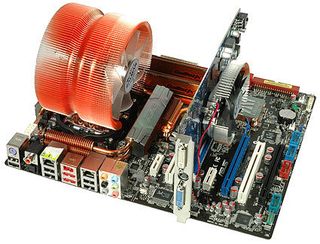
Two of today’s test platforms are DDR2-only, and one supports both DDR2 and DDR3. For DDR2 testing we used Crucial’s highly-overclockable Ballistix PC2-6400. In order to make this a fair fight between DDR2 and DDR3 motherboards, we set both the DDR2 and DDR3 memory to 1066 MHz data rate and CAS 5-5-5-15 timings during performance tests.
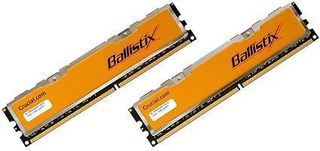
One motherboard that would not accept DDR2 at 1066 MHz data rate was the ASRock X48TurboTwins-WiFi. The setting simply wasn’t available. We tested it at DDR3-1066 for comparison to other platforms, plus DDR2-800 CAS 4-4-4-12 for comparison to itself.
In order to achieve our highest-possible “ambient air” overclock, we chose an enormous liquid cooling kit to keep our CPU near ambient temperatures. Swiftech’s Apogee GTX water block, MCP-655b high-flow pump and 120-mm x3 fan radiator have been keeping our systems on top for three consecutive LGA775 motherboard shootouts.
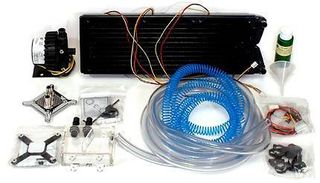
Weary from waiting hours for each hard drive controller test to complete, we sped things up with two Gigabyte I-RAM units, each filled with Crucial PC-3200 CAS 3.
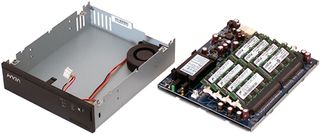
Once again we had to make one exception in testing : While most motherboards supported RAID 0 through the third-party controller, the ECS X48T-A’s JMB361 controller supported only a single SATA drive, and was tested as such.
With a superb signal-to-noise ratio on its line input, the Asus Xonar D2X served as the input device for audio testing.
Stay on the Cutting Edge
Join the experts who read Tom's Hardware for the inside track on enthusiast PC tech news — and have for over 25 years. We'll send breaking news and in-depth reviews of CPUs, GPUs, AI, maker hardware and more straight to your inbox.
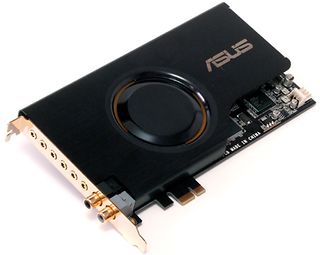
Because some testers don’t have access to some of the company’s software licenses, we ran today’s benchmarks on Windows Vista Ultimate.
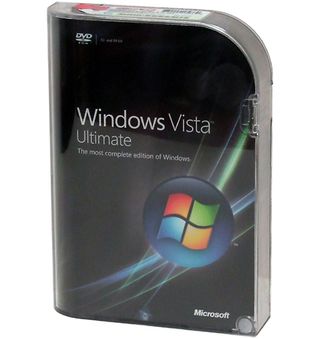
-
nihility I thought the major concern with overclocking was doing it with 4 GB or 8 GB of memory installed and with quad cores.Reply
Buying an overly expensive high end motherboard but installing a 65 nm dual core processor and just 2 GB of RAM seems a very odd combination to me. -
@niReply
Not so odd if you want to get the base foundation set up and then wait for lower prices on higher performance parts later on down the road.
A quad core (3.0 GHz x 4) chip is coming down the pike by years end and DDR3 prices are on the slide. Building an E8400 / 2 GB base machine is exactly what I did to finally migrate from my 5 year old P4 Extreme Edition / Intel 875 based rig.
That's the beauty of the X48 platform; longevity. -
The ECS offering has supposedly been out for around a month, but I can't find it for sale ANYWHERE!! can't even find a price. I used to turn my nose up at ECS products. Our company used Asus boards exclusively thinking they were a higher quality product. Evey one of our Asus boards failed within 4 years. This may be because the Chinese have studied the American business model... Make a product that is designed to either fail or need parts within a calculated period of time. ECS are much cheaper, and so far seem more stable than the Maximus Formula board we purchased recently. The Asus BIOS is for people who like to toy with settings. Unfortunately their BIOS has become complicated beyond their programmers ability too write stable code.Reply
-
Glad to see that gigabyte's board was so much more energy efficient than Asus', or any other board for that matter... especially while overclockingReply
-
Fedor Arcolyte - lol. Did you fall asleep and dream up another page of the review which had power consumption whilst overclocking? :pReply
For the record I'm using my first Gigabyte board (X38-DQ6) and overall I'm pretty happy with it, but having said that I haven't used Asus in at least 5 years. With these comparisons it often comes down to features since performance is pretty near (although the low memory speeds achieved by the Gigabyte surprised me!). -
" Intel covers all of its CPU VRM MOSFET?s with sinks. Our apologies for the alphabet soup that made up the last comment. " -> You could've gone with " Central Processing Unit Voltage Regulator Module Metal?Oxide?Semiconductor Field-Effect Transistor's " , so it's ok =)Reply
-
frodbonzi I wonder how the Asus' Rampage Formula stacks up here? It supports DDR2 or DDR3 and is part of the RoG line... X48 as well...Reply -
xanxaz asrock rocks....lol...although i'll keep my gigabyte... as i dont know where to say this, it's better say it here... your main page is eating my cpu cycles... between 25% up to 50% cpu utilization while viewing your site? please cut down in animated ads... running a c2d at 3.6 and still lags while surfing... dah... it's just your site... os is it me? i think it's the ad on the top right corner that is causing that...Reply -
wozeus I see that Newegg has ECS X48T-A for under $200. Looks like it's a great deal...going to get one.Reply
Most Popular


